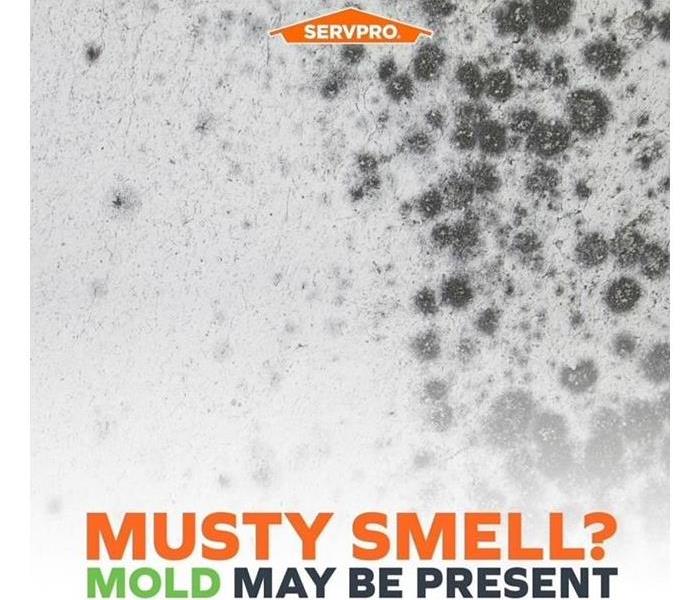How SERVPRO availability preserves homes after mold damage
5/3/2023 (Permalink)
Home mold damage impacts homes with humidity levels above 40-50 percent every year. Even dead spores can leave behind unpleasant stains and odors and negatively affect indoor air quality. While homeowners can perform some remediation tasks themselves, it is recommended that they contact a mold cleanup professional to mitigate the damage.
Mold remediation professionals are trained to perform inspection, sanitation, disposal, and odor control for microbial growth and the conditions that allow it to grow. Our AMRT team adheres to IICRC guidelines and protocols. Total mold removal is not possible because mold exists on some level in all spaces. However, restoration can return an affected property to a safe, sanitary pre-damage state.
Most vulnerable areas in the home for mold
While DIY remediation may not be feasible for many homeowners, they can safely monitor problem areas in most homes for mold. Vulnerable spots in residential structures include the following:
- Bathrooms, especially around sinks, showers, bathtubs, windows, and mirrors, are regularly exposed to large amounts of condensation. Wall and ceiling cavities around ventilation and exhaust fans may also be vulnerable, mainly when plumbing leaks or failures occur
- Kitchens, particularly around sink plumbing or refrigerator lines. Loose connectors or damaged supply lines are common culprits. Refrigerator drip trays can also overflow and damage kitchen flooring, baseboards, and drywall
- Laundry rooms, especially around washing machine lines or utility sinks.
- Utility room fixtures like water heaters are also vulnerable to leaks or failures, especially if they are at least eight years old. Homeowners are recommended to get their water heaters serviced annually to minimize the risk of moisture damage that can encourage microbial growth
The key to minimizing mold risk in any residence is keeping airflow consistent, cleaning surfaces regularly, and maintaining relative humidity levels below 40%. This is crucial to successful mold remediation.
How SERVPRO availability preserves homes after mold damage
A crucial component of SERVPRO’s restoration strategy is the ability to respond to homeowners’ calls 24 hours a day, including during weekends and holidays. Crews provide personal protective equipment and commercial-grade tools to remediate mold spores, debris, and moisture that impact the safety and comfort of a residence.
SERVPRO’s mold remediation process includes:
- Sanitation of surfaces with EPA-registered biocide solutions
- Hot water extraction for vulnerable salvageable surfaces like rugs, upholstery, or drapes
- Drying units coordinate to wick up and remove excess moisture after extraction. Air movement units push moist air off of surfaces and toward dehumidifiers
- Odor Control Technicians (OCTs) can take on various tasks that minimize mold odors. Debris removal, moisture extraction, and sanitation are vital to keeping a property safe. Wet fogging may also be necessary, particularly for ductwork and other surfaces impacted by spores
- SERVPRO HEPA-filter vacuums can catch spores as tiny as 0.3 microns and use negative air pressure machines to prevent stray spores from migrating out of contained restoration spaces or sealed ducts
After mitigating mold damage with these tools, SERVPRO professionals can focus on repainting and restoring structures where needed, reinstalling baseboards, and replacing contents in their proper place wherever possible following the homeowners’ wishes. Restoration is about mitigating damage, preventing it from returning, and keeping damage to personal property to a minimum.

 24/7 Emergency Service
24/7 Emergency Service
